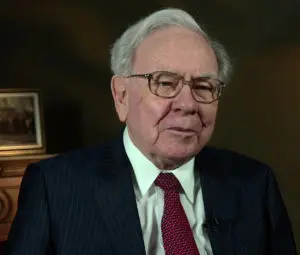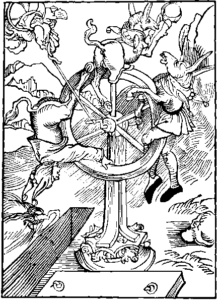December 7, 2025
Warren Buffett, the world’s greatest investor, earned the highest returns of his career from microcap cigar butts. Buffett wrote in the 2014 Berkshire Letter:
My cigar-butt strategy worked very well while I was managing small sums. Indeed, the many dozens of free puffs I obtained in the 1950’s made the decade by far the best of my life for both relative and absolute performance.
Even then, however, I made a few exceptions to cigar butts, the most important being GEICO. Thanks to a 1951 conversation I had with Lorimer Davidson, a wonderful man who later became CEO of the company, I learned that GEICO was a terrific business and promptly put 65% of my $9,800 net worth into its shares. Most of my gains in those early years, though, came from investments in mediocre companies that traded at bargain prices. Ben Graham had taught me that technique, and it worked.
But a major weakness in this approach gradually became apparent: Cigar-butt investing was scalable only to a point. With large sums, it would never work well…
Before Buffett led Berkshire Hathaway, he managed an investment partnership from 1957 to 1970 called Buffett Partnership Ltd. (BPL). While running BPL, Buffett wrote letters to limited partners filled with insights (and humor) about investing and business. Jeremy C. Miller has written a great book– Warren Buffett’s Ground Rules (Harper, 2016)–summarizing the lessons from Buffett’s partnership letters.
This blog post considers a few topics related to microcap cigar butts:
- Net Nets
- Dempster: The Asset Conversion Play
- Liquidation Value or Earnings Power?
- Mean Reversion for Cigar Butts
- Focused vs. Statistical
- The Rewards of Psychological Discomfort
- Conclusion
NET NETS
Here Miller quotes the November 1966 letter, in which Buffett writes about valuing the partnership’s controlling ownership position in a cigar-butt stock:
…Wide changes in the market valuations accorded stocks at some point obviously find reflection in the valuation of businesses, although this factor is of much less importance when asset factors (particularly when current assets are significant) overshadow earnings power considerations in the valuation process…
Ben Graham’s primary cigar-butt method was net nets. Take net current asset value minus ALL liabilities, and then only buy the stock at 2/3 (or less) of that level. If you buy a basket (at least 20-30) of such stocks, then given enough time (at least a few years), you’re virtually certain to get good investment results, predominantly far in excess of the broad market.
A typical net-net stock might have $30 million in cash, with no debt, but have a market capitalization of $20 million. Assume there are 10 million shares outstanding. That means the company has $3/share in net cash, with no debt. But you can buy part ownership of this business by paying only $2/share. That’s ridiculously cheap. If the price remained near those levels, you could effectively buy $1 million in cash for $667,000–and repeat the exercise many times.
Of course, a company that cheap almost certainly has problems and may be losing money. But every business on the planet, at any given time, is in either one of two states: it is having problems, or it will be having problems. When problems come–whether company-specific, industry-driven, or macro-related–that often causes a stock to get very cheap.
The key question is whether the problems are temporary or permanent. Statistically speaking, many of the problems are temporary when viewed over the subsequent 3 to 5 years. The typical net-net stock is so extremely cheap relative to net tangible assets that usually something changes for the better–whether it’s a change by management, or a change from the outside (or both). Most net nets are not liquidated, and even those that are still bring a profit in many cases.
The net-net approach is one of the highest-returning investment strategies ever devised. That’s not a surprise because net nets, by definition, are absurdly cheap on the whole, often trading below net cash–cash in the bank minus ALL liabilities.
Buffett called Graham’s net-net method the cigar-butt approach:
…I call it the cigar-butt approach to investing. You walk down the street and you look around for a cigar butt someplace. Finally you see one and it is soggy and kind of repulsive, but there is one puff left in it. So you pick it up and the puff is free – it is a cigar butt stock. You get one free puff on it and then you throw it away and try another one. It is not elegant. But it works. Those are low return businesses.
Link: http://intelligentinvestorclub.com/downloads/Warren-Buffett-Florida-Speech.pdf
(Photo by Sky Sirasitwattana)
When running BPL, Buffett would go through thousands of pages of Moody’s Manuals (and other such sources) to locate just one or a handful of microcap stocks trading at less than liquidation value. Other leading value investors have also used this technique. This includes Charlie Munger (early in his career), Walter Schloss, John Neff, Peter Cundill, and Marty Whitman, to name a few.
The cigar-butt approach is also called deep value investing. This normally means finding a stock that is available below liquidation value, or at least below net tangible book value.
When applying the cigar-butt method, you can either do it as a statistical group approach, or you can do it in a focused manner. Walter Schloss achieved one of the best long-term track records of all time–near 21% annually (gross) for 47 years–using a statistical group approach to cigar butts. Schloss typically had a hundred stocks in his portfolio, most of which were trading below tangible book value.
At the other extreme, Warren Buffett–when running BPL–used a focused approach to cigar butts. Dempster is a good example, which Miller explores in detail in his book.
DEMPSTER: THE ASSET CONVERSION PLAY
Dempster was a tiny micro cap, a family-owned company in Beatrice, Nebraska, that manufactured windmills and farm equipment. Buffett slowly bought shares in the company over the course of five years.
(Photo by Digikhmer)
Dempster had a market cap of $1.6 million, about $13.3 million in today’s dollars, says Miller.
- Note: A market cap of $13.3 million is in the $10 to $25 million range–among the tiniest micro caps–which is avoided by nearly all investors, including professional microcap investors.
Buffett’s average price paid for Dempster was $28/share. Buffett’s estimate of liquidation value early on was near $35/share, which is intentionally conservative. Miller quotes one of Buffett’s letters:
The estimated value should not be what we hope it would be worth, or what it might be worth to an eager buyer, etc., but what I would estimate our interest would bring if sold under current conditions in a reasonably short period of time.
To estimate liquidation value, Buffett followed Graham’s method, as Miller explains:
- cash, being liquid, doesn’t need a haircut
- accounts receivable are valued at 85 cents on the dollar
- inventory, carried on the books at cost, is marked down to 65 cents on the dollar
- prepaid expenses and “other” are valued at 25 cents on the dollar
- long-term assets, generally less liquid, are valued using estimated auction values
Buffett’s conservative estimate of liquidation value for Dempster was $35/share, or $2.2 million for the whole company. Recall that Buffett paid an average price of $28/share–quite a cheap price.
Even though the assets were clearly there, Dempster had problems. Stocks generally don’t get that cheap unless there are major problems. In Dempster’s case, inventories were far too high and rising fast. Buffett tried to get existing management to make needed improvements. But eventually Buffett had to throw them out. Then the company’s bank was threatening to seize the collateral on the loan. Fortunately, Charlie Munger–who later became Buffett’s business partner–recommended a turnaround specialist, Harry Bottle. Miller:
Harry did such an outstanding job whipping the company into shape that Buffett, in the next year’s letter, named him “man of the year.” Not only did he reduce inventories from $4 million to $1 million, alleviating the concerns of the bank (whose loan was quickly repaid), he also cut administrative and selling expenses in half and closed five unprofitable branches. With the help of Buffett and Munger, Dempster also raised prices on their used equipment up to 500% with little impact to sales volume or resistance from customers, all of which worked in combination to restore a healthy economic return in the business.
Miller explains that Buffett rationally focused on maximizing the return on capital:
Buffett was wired differently, and he achieves better results in part because he invests using an absolute scale. With Dempster he wasn’t at all bogged down with all the emotional baggage of being a veteran of the windmill business. He was in it to produce the highest rate of return on the capital he had tied up in the assets of the business. This absolute scale allowed him to see that the fix for Dempster would come by not reinvesting back into windmills. He immediately stopped the company from putting more capital in and started taking the capital out.
With profits and proceeds raised from converting inventory and other assets to cash, Buffett started buying stocks he liked. In essence, he was converting capital that was previously utilized in a bad (low-return) business, windmills, to capital that could be utilized in a good (high-return) business, securities.
Bottle, Buffett, and Munger maximized the value of Dempster’s assets. Buffett took the further step of not reinvesting cash in a low-return business, but instead investing in high-return stocks. In the end, on its investment of $28/share, BPL realized a net gain of $45 per share. This is a gain of a bit more than 160% on what was a very large position for BPL–one-fifth of the portfolio. Had the company been shut down by the bank, or simply burned through its assets, the return after paying $28/share could have been nothing or even negative.
Miller nicely summarizes the lessons of Buffett’s asset conversion play:
Buffett teaches investors to think of stocks as a conduit through which they can own their share of the assets that make up a business. The value of that business will be determined by one of two methods: (1) what the assets are worth if sold, or (2) the level of profits in relation to the value of assets required in producing them. This is true for each and every business and they are interrelated…
Operationally, a business can be improved in only three ways: (1) increase the level of sales; (2) reduce costs as a percent of sales; (3) reduce assets as a percentage of sales. The other factors, (4) increase leverage or (5) lower the tax rate, are the financial drivers of business value. These are the only ways a business can make itself more valuable.
Buffett “pulled all the levers” at Dempster…
LIQUIDATION VALUE OR EARNINGS POWER?
For most of the cigar butts that Buffett bought for BPL, he used Graham’s net-net method of buying at a discount to liquidation value, conservatively estimated. However, you can find deep value stocks–cigar butts–on the basis of other low “price-to-a-fundamental” ratio’s, such as low P/E or low EV/EBITDA. Even Buffett, when he was managing BPL, used a low P/E in some cases to identify cigar butts. (See an example below: Western Insurance Securities.)
Tobias Carlisle and Wes Gray tested various measures of cheapness from 1964 to 2011. Quantitative Value (Wiley, 2012)–an excellent book–summarizes their results. James P. O’Shaughnessy has conducted one of the broadest arrays of statistical backtests. See his results in What Works on Wall Street (McGraw-Hill, 4th edition, 2012), a terrific book.
(Illustration by Maxim Popov)
- Carlisle and Gray found that low EV/EBIT was the best-performing measure of cheapness from 1964 to 2011. It even outperformed composite measures.
- O’Shaughnessy learned that low EV/EBITDA was the best-performing individual measure of cheapness from 1964 to 2009.
- But O’Shaughnessy also discovered that a composite measure–combining low P/B, P/E, P/S, P/CF, and EV/EBITDA–outperformed low EV/EBITDA.
Assuming relatively similar levels of performance, a composite measure is arguably better because it tends to be more consistent over time. There are periods when a given individual metric might not work well. The composite measure will tend to smooth over such periods. Besides, O’Shaughnessy found that a composite measure led to the best performance from 1964 to 2009.
Carlisle and Gray, as well as O’Shaughnessy, didn’t include Graham’s net-net method in their reported results. Carlisle wrote another book, Deep Value (Wiley, 2014)–which is fascinating–in which he summarizes several tests of net nets:
- Henry Oppenheimer found that net nets returned 29.4% per year versus 11.5% per year for the market from 1970 to 1983.
- Carlisle–with Jeffrey Oxman and Sunil Mohanty–tested net nets from 1983 to 2008. They discovered that the annual returns for net nets averaged 35.3% versus 12.9% for the market and 18.4% for a Small Firm Index.
- A study of the Japanese market from 1975 to 1988 uncovered that net nets outperformed the market by about 13% per year.
- An examination of the London Stock Exchange from 1981 to 2005 established that net nets outperformed the market by 19.7% per year.
- Finally, James Montier analyzed all developed markets globally from 1985 to 2007. He learned that net nets averaged 35% per year versus 17% for the developed markets on the whole.
Given these outstanding returns, why didn’t Carlisle and Gray, as well as O’Shaughnessy, consider net nets? Primarily because many net nets are especially tiny microcap stocks. For example, in his study, Montier found that the median market capitalization for net nets was $21 million. Even the majority of professionally managed microcap funds do not consider stocks this tiny.
- Recall that Dempster had a market cap of $1.6 million, or about $13.3 million in today’s dollars.
- Unlike the majority of microcap funds, the Boole Microcap Fund does consider microcap stocks in the $10 to $25 million market cap range.
In 1999, Buffett commented that he could get 50% per year by investing in microcap cigar butts. He was later asked about this comment in 2005, and he replied:
Yes, I would still say the same thing today. In fact, we are still earning those types of returns on some of our smaller investments. The best decade was the 1950s; I was earning 50% plus returns with small amounts of capital. I would do the same thing today with smaller amounts. It would perhaps even be easier to make that much money in today’s environment because information is easier to access. You have to turn over a lot of rocks to find those little anomalies. You have to find the companies that are off the map–way off the map. You may find local companies that have nothing wrong with them at all. A company that I found, Western Insurance Securities, was trading for $3/share when it was earning $20/share!! I tried to buy up as much of it as possible. No one will tell you about these businesses. You have to find them.
Although the majority of microcap cigar butts Buffett invested in were cheap relative to liquidation value–cheap on the basis of net tangible assets–Buffett clearly found some cigar butts on the basis of a low P/E. Western Insurance Securities is a good example. It had a P/E of 0.15.
MEAN REVERSION FOR CIGAR BUTTS
Warren Buffett commented on high quality companies versus statistically cheap companies in his October 1967 letter to partners:
The evaluation of securities and businesses for investment purposes has always involved a mixture of qualitative and quantitative factors. At the one extreme, the analyst exclusively oriented to qualitative factors would say, “Buy the right company (with the right prospects, inherent industry conditions, management, etc.) and the price will take care of itself.” On the other hand, the quantitative spokesman would say, “Buy at the right price and the company (and stock) will take care of itself.” As is so often the pleasant result in the securities world, money can be made with either approach. And, of course, any analyst combines the two to some extent–his classification in either school would depend on the relative weight he assigns to the various factors and not to his consideration of one group of factors to the exclusion of the other group.
Interestingly enough, although I consider myself to be primarily in the quantitative school… the really sensational ideas I have had over the years have been heavily weighted toward the qualitative side where I have had a “high-probability insight”. This is what causes the cash register to really sing. However, it is an infrequent occurrence, as insights usually are, and, of course, no insight is required on the quantitative side–the figures should hit you over the head with a baseball bat. So the really big money tends to be made by investors who are right on qualitative decisions but, at least in my opinion, the more sure money tends to be made on the obvious quantitative decisions.
Buffett and Munger acquired See’s Candies for Berkshire Hathaway in 1972. See’s Candies is the quintessential high quality company because of its sustainably high ROIC (return on invested capital) of over 100%.
Truly high quality companies–like See’s–are very rare and difficult to find. Cigar butts are much easier to find by comparison.
Furthermore, it’s important to understand that Buffett got around 50% annual returns from cigar butts because he took a focused approach, like BPL’s 20% position in Dempster.
The vast majority of investors, if using a cigar-butt approach like net nets, should implement a group–or statistical–approach, and regularly buy and hold a basket of cigar butts (at least 20-30). This typically won’t produce 50% annual returns. But net nets, as a group, clearly have produced very high returns, often 30%+ annually. To do this today, you’d have to look globally.
As an alternative to net nets, you could implement a group approach using one of O’Shaughnessy’s composite measures–such as low P/B, P/E, P/S, P/CF, EV/EBITDA. Applying this to micro caps can produce 15-20% annual returns. Still excellent results. And much easier to apply consistently.
You may think that you can find some high quality companies. But that’s not enough. You have to find a high quality company that can maintain its competitive position and high ROIC. And it has to be available at a reasonable price.
Most high quality companies are trading at very high prices, to the extent that you can’t do better than the market by investing in them. In fact, often the prices are so high that you’ll probably do worse than the market.
Consider this observation by Charlie Munger:
The model I like to sort of simplify the notion of what goes on in a market for common stocks is the pari-mutuel system at the racetrack. If you stop to think about it, a pari-mutuel system is a market. Everybody goes there and bets and the odds change based on what’s bet. That’s what happens in the stock market.
Any damn fool can see that a horse carrying a light weight with a wonderful win rate and a good post position etc., etc. is way more likely to win than a horse with a terrible record and extra weight and so on and so on. But if you look at the odds, the bad horse pays 100 to 1, whereas the good horse pays 3 to 2. Then it’s not clear which is statistically the best bet using the mathematics of Fermat and Pascal. The prices have changed in such a way that it’s very hard to beat the system.
(Illustration by Nadoelopisat)
A horse with a great record (etc.) is much more likely to win than a horse with a terrible record. But–whether betting on horses or betting on stocks–you don’t get paid for identifying winners. You get paid for identifying mispricings.
The statistical evidence is overwhelming that if you systematically buy stocks at low multiples–P/B, P/E, P/S, P/CF, EV/EBITDA, etc.–you’ll almost certainly do better than the market over the long haul.
A deep value (cigar-butt) approach has always worked, given enough time. Betting on “the losers” has always worked eventually, whereas betting on “the winners” hardly ever works.
Classic academic studies showing “the losers” doing far better than “the winners” over subsequent 3- to 5-year periods:
- Werner De Bondt and Richard Thaler (1985), “Does the Stock Market Overreact?”:https://onlinelibrary.wiley.com/doi/full/10.1111/j.1540-6261.1985.tb05004.x
- De Bondt and Thaler (1987), “Further Evidence on Investor Overreaction and Stock Market Seasonality”:https://www.jstor.org/stable/2328371?seq=1#page_scan_tab_contents
- Josef Lakonishok, Andrei Shleifer, and Robert Vishny (1994), “Contrarian Investment, Extrapolation, and Risk”: http://scholar.harvard.edu/files/shleifer/files/contrarianinvestment.pdf
That’s not to say deep value investing is easy. When you put together a basket of statistically cheap companies, you’re buying stocks that are widely hated or neglected. You have to endure loneliness and looking foolish. Some people can do it, but it’s important to know yourself before using a deep value strategy.
In general, we extrapolate the poor performance of cheap stocks and the good performance of expensive stocks too far into the future. This is the mistake of ignoring mean reversion.
When you find a group of companies that have been doing poorly for at least several years, those conditions typically do not persist. Instead, there tends to be mean reversion, or a return to “more normal” levels of revenues, earnings, or cash flows.
Similarly for a group of companies that have been doing exceedingly well. Those conditions also do not continue in general. There tends to be mean reversion, but in this case the mean–the average or “normal” conditions–is below recent activity levels.
Here’s Ben Graham explaining mean reversion:
It is natural to assume that industries which have fared worse than the average are “unfavorably situated” and therefore to be avoided. The converse would be assumed, of course, for those with superior records. But this conclusion may often prove quite erroneous. Abnormally good or abnormally bad conditions do not last forever. This is true of general business but of particular industries as well. Corrective forces are usually set in motion which tend to restore profits where they have disappeared or to reduce them where they are excessive in relation to capital.
With his taste for literature, Graham put the following quote from Horace’s Ars Poetica at the beginning of Security Analysis–the bible for value investors:
Many shall be restored that now are fallen and many shall fall than now are in honor.
Tobias Carlisle, while discussing mean reversion inDeep Value, smartly (and humorously) included this image of Albrecht Durer’s Wheel of Fortune:
(Albrecht Durer’s Wheel of Fortune from Sebastien Brant’s Ship of Fools (1494) via Wikimedia Commons)
FOCUSED vs. STATISTICAL
We’ve already seen that there are two basic ways to do cigar-butt investing: focused vs. statistical (group).
Ben Graham usually preferred the statistical (group) approach. Near the beginning of the Great Depression, Graham’s managed accounts lost more than 80 percent. Furthermore, the economy and the stock market took a long time to recover. As a result, Graham had a strong tendency towards conservatism in investing. This is likely part of why he preferred the statistical approach to net nets. By buying a basket of net nets (at least 20-30), the investor is virtually certain to get the statistical results of the group over time, which are broadly excellent.
Graham also was a polymath of sorts. He had wide-ranging intellectual interests. Because he knew net nets as a group would do quite well over the long term, he wasn’t inclined to spend much time analyzing individual net nets. Instead, he spent time on his other interests.
Warren Buffett was Graham’s best student. Buffett was the only student ever to be awarded an A+ in Graham’s class at Columbia University. Unlike Graham, Buffett has always had an extraordinary focus on business and investing. After spending many years learning everything about virtually every public company, Buffett took a focused approach to net nets. He found the ones that were the cheapest and that seemed the surest.
Buffett has asserted that returns can be improved–and risk lowered–if you focus your investments only on those companies that are within your circle of competence–those companies that you can truly understand. Buffett also maintains, however, that the vast majority of investors should simply invest in index funds:https://boolefund.com/warren-buffett-jack-bogle/
Regarding individual net nets, Graham admitted a danger:
Corporate gold dollars are now available in quantity at 50 cents and less–but they do have strings attached. Although they belong to the stockholder, he doesn’t control them. He may have to sit back and watch them dwindle and disappear as operating losses take their toll. For that reason the public refuses to accept even the cash holdings of corporations at their face value.
Graham explained that net nets are cheap because they “almost always have an unsatisfactory trend in earnings.” Graham:
If the profits had been increasing steadily it is obvious that the shares would not sell at so low a price. The objection to buying these issues lies in the probability, or at least the possibility, that earnings will decline or losses continue, and that the resources will be dissipated and the intrinsic value ultimately become less than the price paid.
(Image by Preecha Israphiwat)
Value investor Seth Klarman warns:
As long as working capital is not overstated and operations are not rapidly consuming cash, a company could liquidate its assets, extinguish all liabilities, and still distribute proceeds in excess of the market price to investors. Ongoing business losses can, however, quickly erode net-net working capital. Investors must therefore always consider the state of a company’s current operations before buying.
Even Buffett–nearly two decades after closing BPL–wrote the following in his 1989 letter to Berkshire shareholders:
If you buy a stock at a sufficiently low price, there will usually be some hiccup in the fortunes of the business that gives you a chance to unload at a decent profit, even though the long-term performance of the business may be terrible. I call this the “cigar butt” approach to investing. A cigar butt found on the street that has only one puff left in it may not offer much of a smoke, but the “bargain purchase” will make that puff all profit.
Unless you are a liquidator, that kind of approach to buying businesses is foolish. First, the original “bargain” price probably will not turn out to be such a steal after all. In a difficult business, no sooner is one problem solved than another surfaces–never is there just one cockroach in the kitchen. Second, any initial advantage you secure will be quickly eroded by the low return that the business earns. For example, if you buy a business for $8 million that can be sold or liquidated for $10 million and promptly take either course, you can realize a high return. But the investment will disappoint if the business is sold for $10 million in ten years and in the interim has annually earned and distributed only a few percent on cost…
Based on these objections, you might think that Buffett’s focused approach is better than the statistical (group) method. That way, the investor can figure out which net nets are more likely to recover instead of burn through their assets and leave the investor with a low or negative return.
However, Graham’s response was that the statistical or group approach to net nets is highly profitable over time. There is a wide range of potential outcomes for net nets, and many of those scenarios are good for the investor. Therefore, while there are always some individual net nets that don’t work out, a group or basket of net nets is nearly certain to work well eventually.
Indeed, Graham’s application of a statistical net-net approach produced 20% annual returns over many decades. Most backtests of net nets have tended to show annual returns of close to 30%. In practice, while around 5 percent of net nets may suffer a terminal decline in stock price, a statistical group of net nets has done far better than the market and has experienced fewer down years. Moreover, as Carlisle notes in Deep Value, very few net nets are actually liquidated or merged. In the vast majority of cases, there is a change by management, a change from the outside, or both, in order to restore earnings to a level more in line with net asset value. Mean reversion.
THE REWARDS OF PSYCHOLOGICAL DISCOMFORT
We noted earlier that it’s far more difficult to find a company like See’s Candies, at a reasonable price, than it is to find statistically cheap stocks. Moreover, if you buy a basket of statistically cheap stocks, you don’t have to possess an ability to analyze individual businesses in great depth.
That said, in order to use a deep value strategy, you do have to be able to handle the psychological discomfort of being lonely and looking foolish.
(Illustration by Sangoiri)
John Mihaljevic, author of The Manual of Ideas (Wiley, 2013), writes:
Comfort can be expensive in investing. Put differently, acceptance of discomfort can be rewarding, as equities that cause their owners discomfort frequently trade at exceptionally low valuations….
…Misery loves company, so it makes sense that rewards may await those willing to be miserable in solitude…
Mihaljevic explains:
If we owned nothing but a portfolio of Ben Graham-style bargain equities, we may become quite uncomfortable at times, especially if the market value of the portfolio declined precipitously. We might look at the portfolio and conclude that every investment could be worth zero. After all, we could have a mediocre business run by mediocre management, with assets that could be squandered. Investing in deep value equities therefore requires faith in the law of large numbers–that historical experience of market-beating returns in deep value stocks and the fact that we own a diversified portfolio will combine to yield a satisfactory result over time. This conceptually sound view becomes seriously challenged in times of distress…
Playing into the psychological discomfort of Graham-style equities is the tendency of such investments to exhibit strong asset value but inferior earnings or cash flows. In a stressed situation, investors may doubt their investment theses to such an extent that they disregard the objectively appraised asset values. After all–the reasoning of a scared investor might go–what is an asset really worth if it produces no cash flow?
Deep value investors often find some of the best investments in cyclical areas. A company at a cyclical low may have multi-bagger potential–the prospect of returning 300-500% (or more) to the investor.
Mihaljevic comments on a central challenge of deep value investing in cyclical companies:
The question of whether a company has entered permanent decline is anything but easy to answer, as virtually all companies appear to be in permanent decline when they hit a rock-bottom market quotation. Even if a business has been cyclical in the past, analysts generally adopt a “this time is different” attitude. As a pessimistic stock price inevitably influences the appraisal objectivity of most investors, it becomes exceedingly difficult to form a view strongly opposed to the prevailing consensus.
Consider the following industries that have been pronounced permanently impaired in the past, only to rebound strongly in subsequent years: Following the financial crisis of 2008-2009, many analysts argued that the banking industry would be permanently negatively affected, as higher capital requirements and regulatory oversight would compress returns on equity. The credit rating agencies were seen as impaired because the regulators would surely alter the business model of the industry for the worse following the failings of the rating agencies during the subprime mortgage bubble. The homebuilding industry would fail to rebound as strongly as in the past, as overcapacity became chronic and home prices remained tethered to building costs. The refining industry would suffer permanently lower margins, as those businesses were capital-intensive and driven by volatile commodity prices.
CONCLUSION
Buffett has made it clear, including in his 2014 letter to shareholders, that the best returns of his career came from investing in microcap cigar butts. Most of these were mediocre businesses (or worse). But they were ridiculously cheap. And, in some cases like Dempster, Buffett was able to bring about needed improvements when required.
When Buffett wrote about buying wonderful businesses in his 1989 letter, that’s chiefly because investable assets at Berkshire Hathaway had grown far too large for microcap cigar butts.
Even in recent years, Buffett invested part of his personal portfolio in a group of cigar butts he found in South Korea. So he’s never changed his view that an investor can get the highest returns from microcap cigar butts, either by using a statistical group approach or by using a more focused method.
BOOLE MICROCAP FUND
An equal weighted group of micro caps generally far outperforms an equal weighted (or cap-weighted) group of larger stocks over time.
This outperformance increases significantly by focusing on cheap micro caps. Performance can be further boosted by isolating cheap microcap companies with improving fundamentals and positive momentum. We rank microcap stocks based on these and similar criteria.
There are roughly 10-15 positions in the portfolio. The size of each position is determined by its rank. Typically the largest position is 15-20% (at cost), while the average position is 8-10% (at cost). Positions are held for 3 to 5 years unless a stock approaches intrinsic value sooner or an error has been discovered.
The mission of the Boole Fund is to outperform the S&P 500 Index by at least 5% per year (net of fees) over 5-year periods. We also aim to outpace the Russell Microcap Index by at least 2% per year (net). The Boole Fund has low fees.
If you are interested in finding out more, please e-mail me or leave a comment.
My e-mail: jb@boolefund.com
Disclosures: Past performance is not a guarantee or a reliable indicator of future results. All investments contain risk and may lose value. This material is distributed for informational purposes only. Forecasts, estimates, and certain information contained herein should not be considered as investment advice or a recommendation of any particular security, strategy or investment product. Information contained herein has been obtained from sources believed to be reliable, but not guaranteed.No part of this article may be reproduced in any form, or referred to in any other publication, without express written permission of Boole Capital, LLC.









